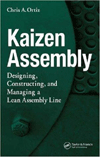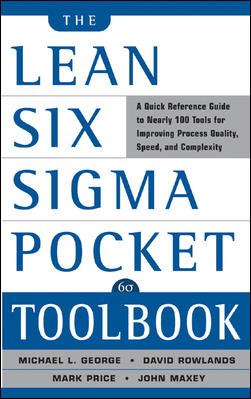Congratulations! You’ve committed to a lean journey. Now you need to make it happen. You plan to lead the waste walks, do the direct observation, dig deeper into problem solving, and facilitate and support improvements. Lean is important, so you tell yourself, “I’ll make time,” but e-mails, projects and fighting fires are also demanding your time.
You cannot “make time.” Once you commit to investing time in lean, you must take it from somewhere else. You might take it from sleep, family or other projects. But regardless of good intentions, the most common scenario is that very little time is committed to lean transformation, and the initiative slowly fades away.
Committing to a lean journey demands that you identify where the time to manage that lean journey will be found. This is one reason why an organization should only commit to a lean journey when the time is right, and you are ready to make these difficult decisions. It is not possible to overstate the importance of asking how, why and when you should commit to a lean journey!
Time is a critical issue, because any job can become filled up with meetings and firefights, if time is not managed well and allocated to appropriate tasks. This is not unlike your closet or garage at home. Every spring, you clean it up. You throw things away, organize what’s left and pretty soon realize that you have plenty of space. But then that space fills up with junk, unless you find a way to keep the junk out of it in the first place. Your job can fill up with junk just like your closet.
No one’s job was designed as an all-day firefight, and this can be avoided. For example, while we were doing organizational design for a company, a new group of managers was being created out of the existing infrastructure. As this group was being launched, we told those managers that, based on our analysis, one-third of their job must be dedicated to continuous improvement. We never actually did this analysis, but if we had just let them fill up their days on their own, their time would have filled up with junk. Then when we told them to do continuous improvement, the response would have been, “we don’t have time.” But allocating some of their time for continuous improvement prevented filling that time up with junk.
One executive I’ve coached dedicates 20 percent of his time towards new initiatives. He doesn’t know what initiative he might be leading, but he makes sure there is always space put aside for leading it. This way, no matter how busy he gets, he already has time available in his schedule. What’s important is that he blocks off this time first, well in advance. He doesn’t have to find the time; the time is already in place.
As you begin a lean journey, or if you are in the middle of it, you first have to decide what activities require your time. Then you must determine where that time will come from. This best comes from observation. Record how you actually spend your time as you spend it, not by looking back at the end of the day and trying to remember how you think you spent your time.
Then start making some tough choices about what you can cut so you have the time for leading the lean journey. Once you’ve found that time, make sure it is irrevocably allocated to leading your lean journey. Otherwise, it could easily fill up with junk. Remember, lean begins with you, and that begins with managing your time to effectively lead your lean journey.
Jamie Flinchbaugh is a founder and partner of the Lean Learning Center in Novi, MI, and the co-author of The Hitchhiker’s Guide to Lean: Lessons from the Road.He shares his successful and varied experiences of lean transformation as a practitioner and leader through companies such as Chrysler and DTE Energy. He also has a wide range of practical experience in industrial operations, including production, maintenance, material control, product development and manufacturing engineering. Jamie is a graduate fellow of the Leaders for Manufacturing Program at the Massachusetts Institute of Technology, where his research thesis was on implementing lean manufacturing through factory design. He also holds a B.S. in Engineering from Lehigh University in Bethlehem, PA, and an M.S. in Engineering from the University of Michigan. To contact Jamie directly, go to the web site www.leanlearningcenter.com.
Never miss the latest news and trends driving the manufacturing industry
Stay in the know on the latest assembly trends.
JOIN TODAY!Copyright ©2024. All Rights Reserved BNP Media.
Design, CMS, Hosting & Web Development :: ePublishing


